Mastering Sales Pipeline Management: Strategies for Building, Optimising, and Accelerating Your Sales Success
Mastering Sales Pipeline Management: Strategies for Building, Optimising, and Accelerating Your Sales Success
Get weekly
HubSpot Updates
Table of Contents
Understanding Sales Pipeline Fundamentals
Constructing an Efficient Sales Pipeline
Managing and Enhancing Your Sales Pipeline
Addressing Cold Leads and Stalled Opportunities
Harnessing Technology for Sales Pipeline Management
Book A Pipeline Review Meeting
Introduction
A Quick Look at Sales Pipelines
So, you're looking to build and manage an effective sales pipeline? That's great! In a nutshell, a sales pipeline is a systematic approach to selling, guiding potential and existing customers through each stage of the sales process, from initial contact to closing the deal. Having a well-structured sales pipeline is vital for any business, as it helps you and your sales reps track and manage your prospects and ensures your sales team stays focused on achieving its goals.
The Significance of a Well-Structured Sales Pipeline
Having a solid sales pipeline in place can make a world of difference for your sales reps. Not only does it help you visualise the progress of your leads and deals, but it also enables you to identify potential issues and make necessary adjustments to your sales strategy. A well-structured and healthy sales pipeline also ultimately leads to more conversions, increased revenue, and a better understanding of your customer base.
Understanding Sales Pipeline Fundamentals

The Difference Between Sales Pipelines and Sales Funnels
First things first, let's clear up the confusion between sales pipelines and sales funnels. While both terms are often used interchangeably, they do have subtle differences. A sales pipeline is like a road map that outlines the entire journey a customer takes, from the moment they learn about your product to when they finally decide to purchase it. Each stage in the pipeline is like a rest stop along the journey where your sales reps help the customer move forward.
On the other hand, a sales funnel is a visual representation of how many potential customers you have at each stage of the sales journey. It narrows down from a broad pool of prospects at the top to the few who become customers at the bottom. In essence, the sales funnel shows you how effectively you're converting prospects into buyers.
Moreover, it's critical for sales professionals to understand that pipelines can vary depending on the industry, product, or service being sold. For instance, a software company's pipeline may differ from that of a real estate agency. Examples of successful companies or sales reps that have effectively utilised sales pipelines include Salesforce and HubSpot, which have consistently reported improved sales performance through managing your pipeline.
Now that we've got that cleared up, let's dive deeper into the world of sales pipelines and explore their various components.
Comparing Sales Pipelines and Sales Forecasts
Another common source of confusion is the difference between sales pipelines and sales forecasts. While both deal with predicting future sales, they serve different purposes. A sales pipeline helps you track the progress of leads and deals through the various stages of the sales funnel, ultimately providing a snapshot of your current sales opportunities.
On the other hand, a sales forecast is a projection of how much revenue you can expect to generate in a given period. It takes into account various factors such as historical sales data, market conditions, and the current state of your pipeline. Essentially, your sales pipeline is the foundation on which your sales forecast is built, and together they help you plan, strategise, and allocate resources more effectively.
Exploring Stages and Metrics in Sales Pipelines
A well-structured sales pipeline typically consists of several stages, each representing a milestone in the customer's journey towards making a purchase. Some common stages include prospecting, qualification, proposal, negotiation, and closing. The specific stages and their order may vary depending on your industry and process, but the key is to define them clearly and consistently.
To measure the effectiveness of your various sales processes and pipeline, it's crucial to track various metrics. Some important ones include the number of deals in each stage, average deal size, conversion rates, and sales cycle length. By monitoring these metrics, you can identify areas for improvement and optimise your sales funnel for better results.
Constructing an Efficient Sales Pipeline
.png?width=627&height=352&name=cold%20leads%20(1).png)
Identifying Potential Buyers and Prospects
.png?width=335&height=188&name=understanding%20sales%20pipeline%20fundamentals%20(1).png)
The first step in building a successful sales pipeline is to identify potential buyers, also known as prospects. These are people or companies who could benefit from your product or service and are likely to make a purchase. To find prospects, you can use various techniques and sales activities such as market research, social media, networking events, or targeted advertising.
It's essential to qualify your prospects to ensure they're a good fit for your offering. This means evaluating factors such as their budget, decision-making authority, and their need for your product or service. By focusing on qualified leads, you'll save time and resources while increasing the chances of closing successful deals.
Setting Up Your Sales Pipeline Stages
.png?width=335&height=188&name=understanding%20sales%20pipeline%20fundamentals%20(2).png)
A crucial aspect of identifying potential buyers and prospects is lead scoring and lead qualification. This process helps you prioritise leads based on their likelihood of converting into customers. Additionally, effectively segmenting your prospects allows you to tailor your approach at each stage of the pipeline, ensuring that your communication is targeted and relevant.
Once you've identified your sales prospects, it's time to set up the stages of your sales pipeline. As mentioned earlier, these stages represent the key milestones in the customer's journey towards making a purchase. The specific stages may vary, but a typical sales pipeline includes the following:
-
Prospecting: Finding potential customers
-
Qualification: Determining if a prospect is a good fit
-
Presentation: Showcasing your product or service
-
Proposal: Submitting a formal offer
-
Negotiation: Resolving any objections or concerns
-
Closing: Finalising the deal
By breaking down the sales journey into distinct stages, you'll be able to track the progress of your deals more effectively and identify areas where your sales and marketing team may need additional support or training.
Establishing Sales Goals and Calculating Required Opportunities

With your sales pipeline stages in place, it's time to set some goals for your sales team. These goals might be related to revenue targets, the number of deals closed, or customer acquisition. To determine the number of opportunities required to hit your revenue goals first, you'll need to consider your average deal size and conversion rates at each stage of your pipeline.
Examples of different types of sales targets and goals include revenue targets, the number of new customers, or customer retention rates. Aligning these goals with your company's overall objectives ensures that your sales reps are working towards a common purpose. It's also crucial to understand the concept of a sales target, which represents a specific, measurable outcome your team aims to achieve, unlike broader sales goals.
For example, if your goal is to generate £100,000 in revenue and your average deal size is £10,000, you'll need to close ten deals. If your conversion rate from prospect to closed deal is 20%, you'll need to start with 50 qualified prospects to achieve your goal. By understanding these numbers, you can ensure your sales team is focusing their efforts on the right opportunities.
Refining Tactics for Nurturing Leads
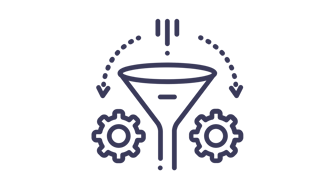
Once your sales pipeline is set up and your goals are established, you'll want to focus on nurturing your leads and helping them progress through the pipeline. This involves building relationships with your prospects, addressing their questions and concerns, and demonstrating the value of your product or service.
Some effective lead nurturing tactics include personalized email campaigns, informative blog posts, webinars, and social media engagement. By tailoring your approach to each prospect's unique needs and preferences, you can increase the chances of moving them through the pipeline and ultimately closing the deal.
Some successful lead nurturing campaigns, such as those run by Marketo and Pardot, have helped businesses significantly improve their conversion rates. One of the keys to successful lead nurturing is personalising your communication and marketing efforts to resonate better with your prospects. This can be achieved through tailored email campaigns, targeted social media advertising, and relevant content marketing.
Creating or Adapting Your Sales Process

With your sales pipeline in place and your own lead generation and nurturing tactics refined, it's essential to ensure your sales funnel aligns with your pipeline stages. This means reviewing your existing process and making any necessary adjustments to help your sales reps navigate the pipeline more effectively.
For example, you may need to provide additional training on presenting your product or service, or you might need to revise your proposal templates to better address common objections. By continuously reviewing and adapting your sales workflow, you can optimise it for maximum efficiency and success.
Continuous improvement in your sales funnel is vital for staying ahead of the competition. By using data and feedback from your sales reps, you can optimise your sales methodology and uncover areas that need improvement. Identifying bottlenecks or inefficiencies in your sales approach will allow you to make the necessary adjustments to improve overall performance.
Managing and Enhancing Your Sales Pipeline
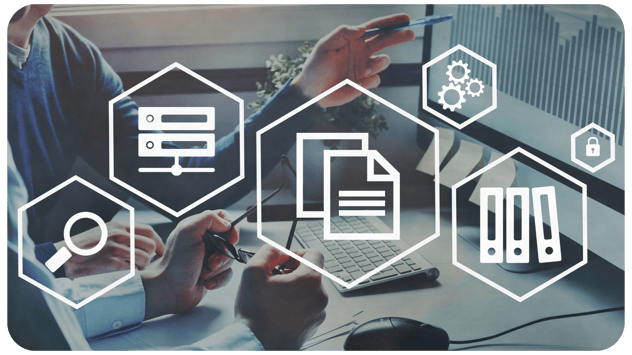
Key Metrics and Conversion Rates in Sales Pipelines
Now that your sales pipeline is up and running, it's important to monitor its performance and make any necessary adjustments. To do this, you'll need to track key metrics and conversion rates, such as:
-
Number of deals in each stage
-
Average deal size
-
Conversion rate at each stage
-
Sales cycle length
.png?width=2240&height=1260&name=examples%20of%20key%20metrics%20to%20track%20(1).png)
Sales managers and team leaders play a crucial role in coaching and mentoring their team members, helping them improve their sales pipeline. Data-driven insights can also be used to uncover patterns and trends in your sales pipeline, allowing you to adjust your strategies accordingly. This can involve redefining sales territories, reallocating resources, or reevaluating sales goals.
By analysing these metrics, you and sales reps can identify bottlenecks in your pipeline, pinpoint areas for improvement, and make data-driven decisions to enhance your sales system.
Understanding Sales Cycle Length and Calculating Pipeline Velocity
.png?width=335&height=188&name=cold%20leads%20(2).png)
Another important aspect of managing your sales pipeline is understanding your sales cycle length. This refers to the average amount of time it takes for a prospect to move through your pipeline and become a customer. A shorter sales cycle generally means a more efficient sales process, while a longer sales cycle may indicate areas that need improvement.
.png?width=489&height=275&name=identify%20opportunity%20(1).png)
Pipeline velocity is a metric that helps you understand just how many deals and quickly deals are moving through your pipeline. To calculate pipeline velocity, you'll need to consider the number of deals in your pipeline, the average deal size, the overall conversion rate, and the sales cycle length. A higher pipeline velocity indicates a more efficient sales process, while a lower velocity suggests there may be room for improvement.
Maintaining a Clean and Updated Pipeline
.png?width=335&height=188&name=cold%20leads%20(3).png)
To keep your sales pipeline running smoothly, it's essential to regularly clean and update it. This involves removing any outdated or irrelevant information, updating deal statuses, and ensuring all contact information is accurate. By keeping your pipeline clean and up-to-date, you'll make it easier for your sales team to focus on the most promising opportunities and avoid wasting time on deals that are no longer viable.
Recognising Commonalities Among Successful Opportunities
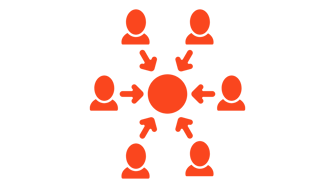
One way to optimise your sales pipeline is to analyse the characteristics of successful deals and identify any commonalities. For example, you might find that certain industries or company sizes tend to have higher conversion rates or that deals with shorter sales cycles are more likely to close. By recognising these patterns, you can target your sales efforts more effectively and increase your chances of success.
Distinguishing Between Sales Pipeline Reviews and Sales Forecast Reviews
.png?width=335&height=188&name=commonalities%20(1).png)
Finally, it's important to understand the difference between sales pipeline reviews and sales forecast reviews. While both involve analysing your sales performance, they serve different purposes.
A sales pipeline review is focused on the current state of your pipeline, identifying bottlenecks, and making any necessary adjustments to your sales process. On the other hand, a sales forecast review is more concerned with projecting future sales and revenue, taking into account factors such as historical sales data, market conditions, and the current state of your pipeline. By conducting both types of reviews regularly, you can ensure your sales strategy remains aligned with your business objectives.
Addressing Cold Leads and Stalled Opportunities
Effective Follow-Up Strategies for Cold Leads
.png?width=335&height=188&name=follow%20up%20strategies%20%20(1).png)
Cold leads are prospects who have shown initial interest in your product or service but have not engaged with your sales team in a while. It's important to follow up with these leads to reignite their interest and keep them in your pipeline.
Some effective follow-up strategies for cold leads include using social media to engage with prospects, attending industry events to reconnect with leads, and offering value-added content like whitepapers or webinars. It's also essential to consider the psychological aspects of overcoming objections and re-engaging stalled opportunities. This may involve empathising with the prospect's concerns, addressing objections, and providing reassurances.
When to Use a Sales Breakup Email and Its Purpose
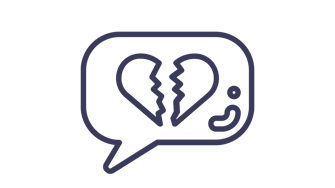
Sometimes, despite your best efforts, a prospect simply isn't responsive or doesn't seem interested in moving forward. In these cases, it's important to know when to cut your losses and move on. A sales breakup email is a message that acknowledges the lack of engagement and offers the prospect one last opportunity to re-engage before you close the door on further communication.
The purpose of a sales breakup email is to prompt a response from the prospect, either reigniting their interest or providing closure so you can focus your efforts on more promising opportunities.
Identifying and Resolving Stalled Opportunities in Your Sales Pipeline
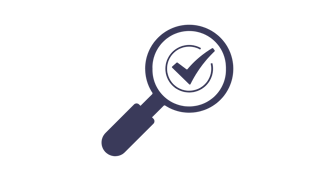 Stalled opportunities are deals that have been stuck in one stage of your pipeline for an extended period. These can be a drain on your resources, so it's important to identify them and take action to resolve any issues.
Stalled opportunities are deals that have been stuck in one stage of your pipeline for an extended period. These can be a drain on your resources, so it's important to identify them and take action to resolve any issues.
First, assess the reasons for the stall. This could be due to a lack of engagement from the prospect, internal factors within their organisation, or a breakdown in communication. Once you've identified the root cause, you can take appropriate action, such as re-engaging the prospect, addressing any objections, or providing additional support.
Harnessing Technology for Sales Pipeline Management

Benefits of CRM Systems for Sales Pipeline Management
In today's fast-paced business environment, leveraging technology is crucial for effective sales pipeline management. Customer Relationship Management (CRM) systems are powerful tools that can help you streamline your sales process, keep track of your leads and deals, and analyse your pipeline performance.
Some key benefits of using a CRM system for managing your sales pipeline include:
-
Centralised data: A CRM system consolidates all your customer and prospect information in one place, making it easier to access and manage.
-
Real-time insights: You can view up-to-date information about your pipeline and sales targets, enabling you to make informed decisions and adjust your sales strategy as needed.
-
Automation: CRM systems can automate routine tasks such as sending follow-up emails or scheduling calls, freeing up your sales team to focus on more important activities.
-
Reporting and analytics: CRM systems offer robust reporting and analytics features, allowing sales leaders to track key metrics and identify trends to optimise your sales process.
Selecting the Right CRM for Your Business
When choosing a CRM system for your business, it's important to consider factors such as:
-
Scalability: Ensure the CRM system can grow with your business, accommodating an increasing number of users, contacts, and features as needed.
-
Integration: Look for a CRM that can integrate with your existing software and tools, such as email platforms, marketing automation, and accounting software.
-
Customisation: Choose a CRM that allows you to customise fields, stages, and workflows to match your unique sales process.
-
Ease of use: Opt for a CRM with an intuitive interface and straightforward features to minimise the learning curve for your sales team.
-
There are various CRM and sales pipeline tools available in the market, each with its unique features and benefits. Examples include Salesforce, HubSpot, and Pipedrive. Choosing the right technology solution for your sales pipeline management needs
By selecting the right CRM for your business, you'll be able to effectively manage your sales pipeline, optimize your sales process, and ultimately drive more revenue.
Conclusion
Building and managing an effective sales pipeline is a critical component of a successful sales strategy. By understanding the fundamentals of pipelines, setting up and refining your sales process, and leveraging technology to streamline your efforts, you can improve your conversion rates, shorten your sales cycle, and achieve your sales goals. Remember to monitor and analyse your sales pipeline report performance regularly, making adjustments as needed to stay on track and maintain a healthy, efficient sales pipeline.
FAQs
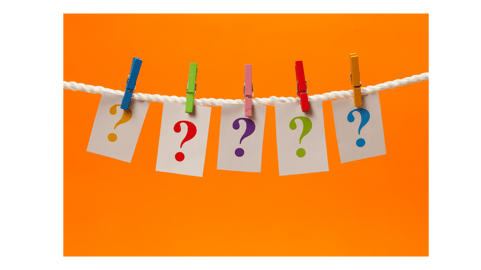
What is a pipeline in business terms? A pipeline refers to the process of identifying, nurturing, and converting prospects into customers. It's a visual representation of the different stages a prospect goes through before becoming a paying customer.
Why is a sales pipeline so important in sales? The sales pipeline is important because it helps sales teams track and manage prospects, measure sales performance, and forecast future revenue. A well-structured pipeline ensures a steady flow of leads and opportunities, ultimately driving sales growth.
What is pipeline vs funnel sales? A sales pipeline represents the stages and steps a prospect goes through in the sales process, while a sales funnel is a visual representation of the number of prospects at each stage and how effectively they're being converted into customers.
What does it mean to build a sales pipeline? Building a sales pipeline means creating a structured and organised process for identifying, engaging, and converting prospects into customers. This includes defining sales stages, setting goals, and implementing strategies to move prospects through the pipeline.
How do you build an effective sales pipeline? To build an effective sales pipeline, you need to identify potential buyers and prospects, set up sales pipeline stages, establish sales goals, refine lead nurturing tactics, and create or adapt your sales process.
What should a sales pipeline include? A sales pipeline should include clearly defined stages, a set of goals and objectives, strategies for lead nurturing, and metrics to measure the effectiveness of the pipeline.
What is a sales pipeline strategy? A sales pipeline strategy is a comprehensive approach to managing and optimising your sales pipeline, focusing on identifying prospects, nurturing leads, and converting opportunities into customers.
What is a pipeline stage? A pipeline stage is a step in the sales process where a prospect is engaged and moved closer to becoming a customer. Stages may include lead generation, lead nurturing, negotiation, and closing.
What is sales pipeline age? Sales pipeline age refers to the amount of time a lead or opportunity has been in the sales pipeline, from the moment it enters the pipeline to the current stage.
What is a typical sales pipeline? A typical sales pipeline includes stages such as lead generation, lead qualification, lead nurturing, proposal and presentation, negotiation, and closing. It's a structured process that helps sales teams track and manage prospects and opportunities.
What is a pipeline in sales? In sales, pipeline refers to the structured process of identifying, nurturing, and converting prospects into customers. It's a visual representation of the stages and steps a prospect goes through in the sales process, helping sales teams track and manage prospects and opportunities.
How do I build my own pipeline? To build your own pipeline, start by identifying potential buyers and prospects, setting up sales pipeline stages, establishing sales goals, refining lead nurturing tactics, and creating or adapting your sales process. Continuously monitor and optimize your pipeline for maximum efficiency.
What is the sales pipeline formula? The sales pipeline formula is a method for calculating the value of your sales pipeline based on the number of opportunities at each stage and their average deal size. The formula is: Pipeline Value = (Number of Opportunities in Stage x Average Deal Size x Stage Win Rate).
How do you generate pipeline leads? To generate pipeline leads, focus on targeted marketing campaigns, social media engagement, attending industry events, and creating valuable content. Use lead generation tools and strategies like email marketing, cold calling, and search engine optimization t
Our content includes affiliate links. This means that we may receive a commission if you make a purchase through one of the links on our website. This will be at no cost to you and helps to fund the content creation work on our website.
